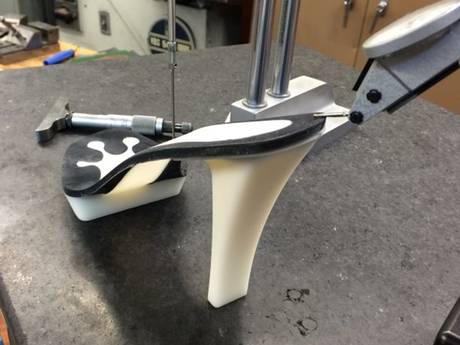Anyone who's worn high heels will be familiar with the uniquely excruciating pain that comes from cramming your foot at an unnatural angle into a tight, blister-causing piece of leather. But for many of us, the way they look makes the pain worth it… sort of.
Now an astronaut, an engineer, a wearable tech expert, and an orthopedist have teamed up to create a stiletto that they claim will stop us having to choose between comfort and fashion. By using new materials and innovative engineering, they've found a way to spread pressure more evenly around the foot and help prevent some of the damage caused by regular heel-wearing.
Brought together by former Space X executive Dolly Singh, the team has founded company Thesis Couture. "The key was to make it an interesting problem in their language. Asking them to design a high heel isn't interesting," Singh told Tim Walker over at The Independent. "But asking them to design a structure that supports a secondary structure, which is dynamic and has a 180-degree range of motion and happens to be a human body? That's interesting. I had to make them see it not as a fluffy problem, but as a serious engineering problem."
Singh admits that she's never going to be able to make stilettos feel like wearing trainers, but she believes that they can definitely make them as stable and comfortable as wedge heels.
Their design includes a unique plastic shank that serves as the 'spine' of the shoe. Usually this shank is made from steel, but by using a strong but flexible and light plastic resin, it not only offers proper support, but also absorbs more of the force from the impact of walking.
This means that when the wearer is standing still, the pressure is on their toes, but when they walk, the pressure is placed on their heel, more evenly dividing the load and reducing the impact of each step by up to 50 percent, Singh told Walker.
Around this shank, the team has placed comfortable, aerospace-grade foam known as thermoplastic polyurethane. This replaces the typical cardboard that's usually used in traditional high heels. The team has also doubled the size of the rectangular stiletto heel to make the whole thing more stable.
 ThesisCouture
ThesisCouture
The heel height will be a little under 7.6 cm (3 inches) high, but thanks to their clever design, the team claims that it will look more like 10 cm (4 inches). Singh expects that the first shoes will be ready in around two to three months, with the first limited edition run retailing for around US$925 a pair.
In the long run they want to drop the price to around US$300, as well as license the technology to other brands.
"Five years from now," Singh told The Independent, "I want every high heel on the face of the Earth to be made the way we make them."
Given the fact that people in the US spend US$20 billion on high heels every year - which can often lead to permanent knee, foot and tendon damage - it's a well overdue change.
